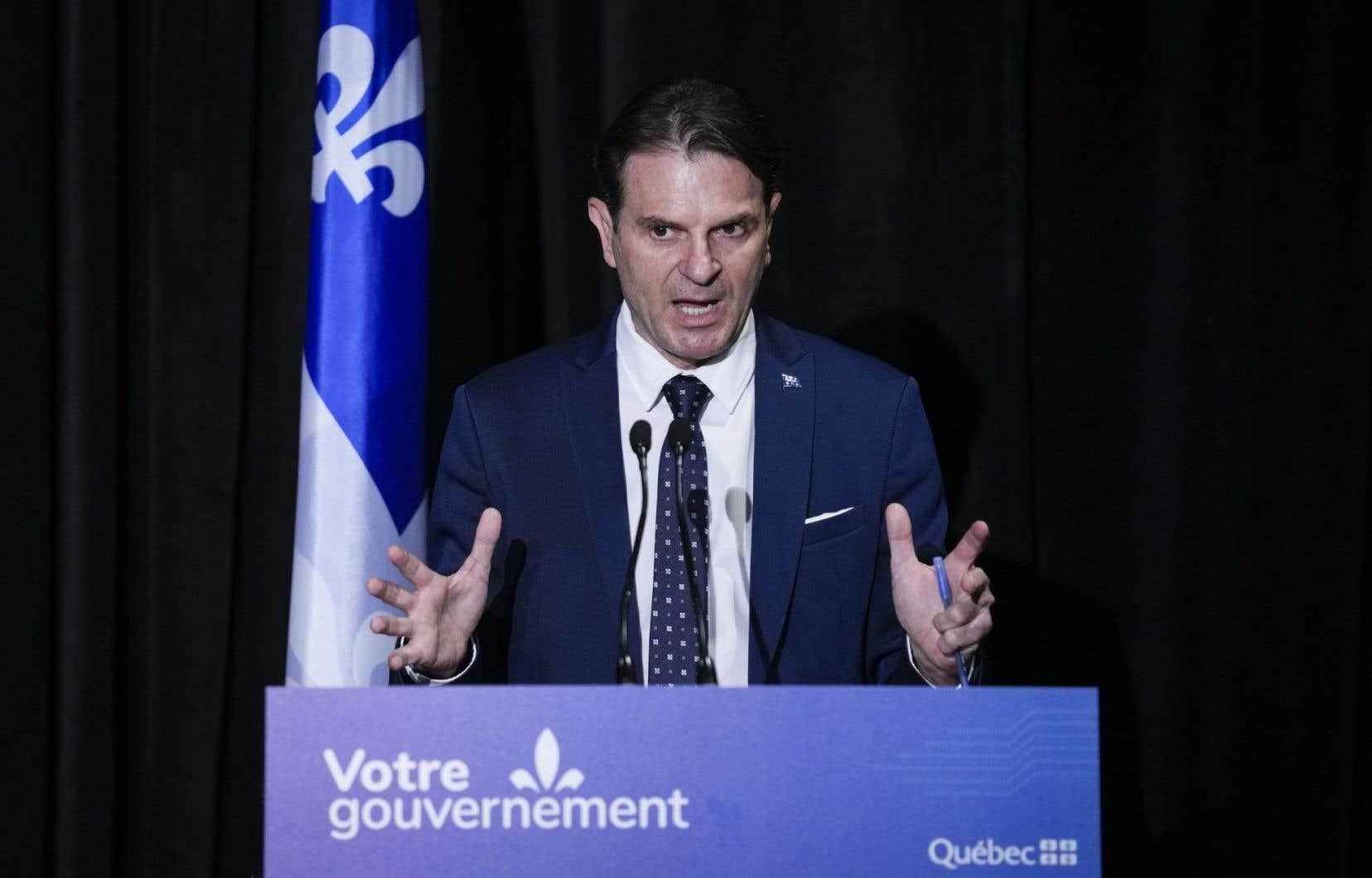For the first time as of this Wednesday, the plane will cost less to go to the Magdalen Islands or Abitibi than in Europe. But it will be necessary that the displacement enters into a series of criteria.
“Today, we are bringing into the world a program which is unique, which is unprecedented and which will ensure the sustainability of air transport for the coming years,” said Transport Minister François Bonnardel on Tuesday, revealing the details of the program. air access to the regions.
“It’s a first in Canada what we are doing today. It’s unprecedented, it’s unheard of, ”enthused the minister.
The program, which has an envelope of $86 million for the next two years, will, he hopes, achieve several objectives.
“For us, what was important was to allow people […] to say to myself: for the first time in Quebec, I can travel at a reasonable price to destinations that we know or that people are going to know and that they may not know. It’s an important step for the tourism industry, it’s an important step for the regional airline industry and it’s also an important step for all of Quebec,” said Minister Bonnardel.
General public component and resident component
“Coming from a small village on the Lower North Shore, I understand the challenge Quebecers face when they have to travel,” said Pascan President Juilan Roberts, whose airline is among the partners of the program.
The program has two components: one for residents of remote regions — Abitibi-Témiscamingue, Côte-Nord and Basse-Côte-Nord, Bas-Saint-Laurent, Gaspésie, Îles-de-la-Madeleine, Saguenay–Lac-Saint- Jean, Eeyou Istchee Baie-James and Whapmagoostui —, and another for the general public.
Residents of these regions will therefore be entitled to a refund of 30% to 60% of the ticket price and will not be subject to any maximum refund amount. For the general public, tickets will be priced at $500 round trip or $250 one way and each person will be allowed six one-way or three round trips.
And there will be no unpleasant surprises when paying, assures François Bonnardel. “The maximum price of $500 includes airport and security fees, as well as taxes. »
Restrictions
An important restriction applies: the discount is only offered for trips made for personal reasons and tickets reimbursed by an employer, organization, health center or municipality, for example, are not eligible either. .
In the case of the general public discount, it only applies to departures or arrivals at the airports of Montreal, Quebec and Saint-Hubert. Unlike the first tier, which involves a refund request, $500 general public tickets will be available for purchase from participating carriers.
So far, six carriers have entered into agreements with Quebec, namely Air Canada, Air Creebec, Air Inuit, Air Liaison, PAL Airlines and Pascan.
Timid return of travelers
Some 98,800 tickets will be available for just over 20 destinations, but it is unlikely that they will all find takers unless there is an unexpected recovery and enthusiasm. By the Ministry of Transport’s own admission, the number of available tickets is about 50% higher than anticipated demand.
“Honestly, it will be a great success if we manage – and I hope so – to sell these 98,000 tickets over a full year. If this is the case and if the carriers ask us for additional tickets, we will have the opportunity to return to work with our teams from the ministry to improve these tickets if necessary,” said the Minister, specifying that there are some 500,000 passengers use these regional air routes annually, of which approximately one-third do so for personal use.
“We really believe that this new program will bring people back on the flights, because we know it’s been difficult the last two years and we hope that this new program will bring these people back,” said de his side the financial director of Air Creebec, Sylvain Dicaire, who also participated in the press conference.
Mr. Dicaire hopes to see tangible results in the short term, because even if he notes a return of travelers, it is still rather timid. “It’s not even close to what it was before the pandemic. We’re starting to see a little bit of movement. The pandemic is starting to fade a lot, but we are far from what we had as a fill rate, ”he said.
